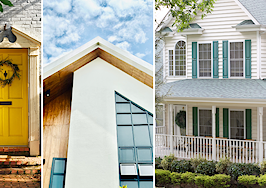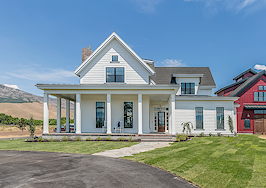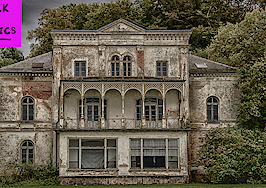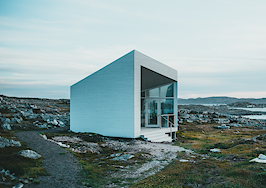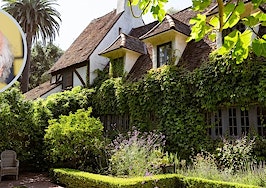Looking for more new agent advice? Sign up for The Basics, a weekly newsletter with everything you need to launch your real estate business.
Residential housing styles change and evolve in response to various factors, including politics and the economy. Cultural issues like family size, women moving into the workplace, the aging population and working from home all affect our homes’ size, style and location.
Throughout our history, the places in which we reside have offered shelter, a place to relax, prepare food and eat, entertain and store our belongings. As lifestyles change, our homes adapt to serve us better and fulfill our needs.
However, two basic rooms have been a part of our homes for the past 120 years: kitchens and bathrooms. Over the decades, these rooms have grown and become more sophisticated. Real estate agents who understand this evolution are equipped to discuss with their sellers and buyers how and why these rooms have changed, their locations in the home, how the rooms have adapted and why.
Starting with the 1900s, which was still known as the Victorian Age, bathrooms and kitchens became “modern” due to the availability of indoor plumbing and the invention of the water heater. Plumbing and electricity were common and readily available in urban areas, which is where the modern kitchen and bath were quickly adopted by homeowners who could afford these modern conveniences and understood the value of hygiene, refrigeration and bathing.
Kitchen styles circa 1900
Kitchens in 1900 were very simple, with large porcelain sinks with attached drainboards attached to the wall with an integral ceramic backsplash, supported by two or four ceramic legs. In rural areas, a well or pump in the yard behind the farmhouse was the source of water, which was carried into the home by buckets.
Stoves were large cast-iron devices fueled by coal or gas. The precursor of the refrigerator, the ice box, was the third convenience in the kitchen. Ice was delivered weekly by truck, used to prevent spoiling of food. After 1910, General Electric refrigerators became available for residential use.
Modern supermarkets were yet to be born, and cooks and housewives visited butchers, fishmongers, bakeries and markets daily for provisions. There was no need to store large quantities of food due to daily replenishment. Pantries and larders, usually unheated, served as cold rooms to store foodstuffs and dry goods.
Countertops and built-in cabinets were not a part of the kitchen at the turn of the century. Kitchen dressers or cabinets, sometimes called “Hoosiers,” had drawers, shelves and bins for cooking utensils, flour, salt and sugar storage.
A tin-lined drawer was used as a breadbox to prevent mice from snacking on the family’s baked goods. One company that manufactured these kitchen storage pieces advertised them as “Kitchen Pianos,” as the modern homemaker had “everything at her fingertips.”
Families gathered at tables in large kitchens to eat, using the dining room only for formal occasions. Households with servants used the dining room more frequently.
Linoleum floors were introduced in the late 1800s and were widely used after 1900 for kitchen floors. Cork was another option for kitchen floors and remains a “green” material to this day, as cork trees replenish themselves every five to six years.
Butler’s pantries were transition spaces between kitchens and dining rooms, where food was plated and then served. This prevented heat and smells from the kitchen from coming directly into the dining room. Often fitted with shelves and counters, butler’s pantries had sinks where dishes could be washed before storing.
The Victorians mastered the art of applying glass to cast iron, making sinks and bathtubs durable and sanitary. This hard-wearing porcelain became the norm for kitchen and bathroom sinks, toilets and bathtubs.
Bathroom styles circa 1900
Wood casings or surrounds for both tubs and toilets were commonplace in bathrooms of the 1900s, as were wood-paneled walls. Once porcelain tile for floor and walls were easily available, the wood surrounds, floors and wall panels, which required constant upkeep in damp bathroom environments, were eliminated.
Urban areas had water heaters in the kitchens, and, as they were the warmest rooms in the home, a portable tin tub for bathing was used near the source of heat and water. After 1900, all but the smallest homes had an upstairs bathroom with a sink, toilet and bathtub.
Before that time, chamber pots and outdoor privies served as bathrooms. After toilets moved inside the house from the backyard privy, they were typically in the rear of the first floor to prevent odors from traveling into the home. The invention and acceptance of the “S” curve trap under sinks and toilets, which contained odors, allowed toilets to move upstairs, near bedrooms.
Nickel was the most common material for faucets and taps, while copper and cast iron were used for pipes to supply water to both kitchens and baths.
Flush toilets were a modern convenience of the 1900s but did not resemble today’s toilet with a connected water tank. To use gravity to facilitate flushing waste, a tin or copper cistern hung on the wall above the toilet employed a chain that the user pulled to release water, connected to the toilet bowl via a pipe, to remove the waste.
These wall-hung cisterns were encased in oak or mahogany to make them more attractive. Toilet seats were also fabricated of oak and mahogany, while the toilet bowl was ceramic, often colorful and elaborately decorated.
Stationary bathtubs in upstairs bathrooms also became a standard in the 1900s bathroom, often encased in wood. Showers were small, with a ring to support a curtain and contain water. Bathing was an elaborate affair, which one enjoyed and enhanced health.
Water heaters circa 1900
Water heaters or, from Great Britain, “coppers” were part of the bathrooms of this period. A small brick or stone fireplace was built into the bathroom wall, with a copper metal kettle used to heat water for the bath. Once the pressure release valve was invented and perfected, after 1900, water heaters became safe to use, as the valves prevented explosions.
Although houses and their inhabitants have changed over time, kitchens and bathrooms arguably show the most innovations and adaptations. Real estate agents who can discuss kitchen and bathroom evolution with buyers and sellers have an advantage over agents who are less well-versed.
Gerard Splendore is a licensed associate real estate broker with Warburg Realty in New York. Connect with him on LinkedIn.


